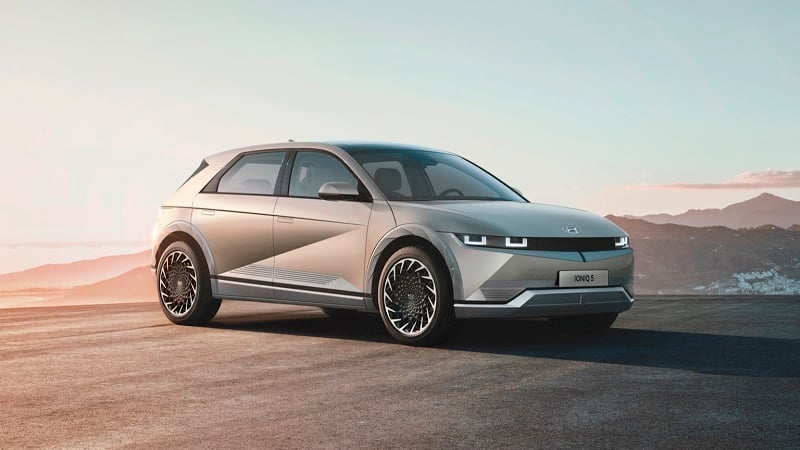Explaining the Difference Between PHEV and Fully-Electric Hyundai Models
Explaining the Difference Between PHEV and Fully-Electric Hyundai Models
Posted on September 12, 2023

In the age of electrified transport, deciphering the differences between various types of electric vehicles can sometimes be a daunting task. Hyundai, a leading automobile manufacturer, has invested heavily in the development of both plug-in hybrid electric vehicles (PHEVs) and fully-electric models. Understanding the nuances between these two categories of vehicles can help consumers make informed choices about their next car purchase. In this article, we will explain the differences between PHEVs and fully-electric Hyundai models, diving into the mechanics, benefits, and drawbacks of each type.
Understanding Electric Vehicles: The Basics
Before delving into the differences between the two, it's crucial to understand the fundamental principles governing electric vehicles. They are primarily powered by electricity, either solely or in combination with a conventional internal combustion engine. Now, let’s look at how these principles apply to PHEVs and fully-electric Hyundai models.
Plug-in Hybrid Electric Vehicles (PHEVs)
PHEVs represent a middle ground between traditional gasoline-powered vehicles and fully-electric vehicles. A PHEV is equipped with both an internal combustion engine and an electric motor, utilizing a battery pack that can be recharged by plugging it into an external power source.
Examples of Hyundai models with a Plug-in hybrid powertrain include the Hyundai Tucson PHEV and the Hyundai Santa Fe PHEV. Both are powered by a 13.8-kWh battery that enables each model to travel 53 kilometres on electric power alone.
Flexible Fueling Options and Impressive Performance
One of the main advantages of a Hyundai PHEV is the flexibility it offers in terms of fueling options. You can recharge the battery at home or at a charging station, or refuel at a gasoline station, providing an extended total driving range.
In other words, you don’t depend on electric power alone for your journey. You can use the battery to save considerable fuel on your weekly commute, but you also have the freedom of taking extended road trips without having to worry about finding a charging station. For those not entirely ready to transition to a fully-electric vehicle, PHEVs serve as an excellent stepping stone. They allow drivers to experience the benefits of electric driving without the range anxiety often associated with fully-electric vehicles.
Moreover, they deliver impressive performance. Both the Tucson PHEV and Santa Fe PHEV use a turbocharged four-cylinder engine along with the electric motor. The combination delivers a potent 260 horsepower and 258 pound-feet of torque.
Fully-Electric Hyundai Models
Fully-electric Hyundai models like the Hyundai Ioniq 5 or Ioniq 6 are powered solely by electric motors, eliminating the internal combustion engine altogether. This means these vehicles produce zero tailpipe emissions, making them a more environmentally friendly option compared to PHEVs. They also reduce your fuel costs to zero and because electric vehicles require less maintenance, owning an EV means considerably less ownership costs.
Quiet and Smooth Performance
Fully-electric vehicles are known for their quiet operation and smooth acceleration. Hyundai's fully-electric lineup is no exception, offering a serene and comfortable driving experience. The most powerful Hyundai electric vehicles reach 100 km/h in just over 5 seconds, making them not only efficient, but a lot of fun to drive as well.
Comparing Charging Infrastructure and Range
Charging Infrastructure
With fully-electric models, owners will rely entirely on charging stations, which are gradually becoming more ubiquitous. PHEVs, on the other hand, can fall back on gasoline refueling in areas where charging infrastructure is sparse.
Driving Range
Fully-electric Hyundai models tend to offer a substantial electric range, sufficient for most daily driving needs. However, PHEVs offer the added reassurance of extended range thanks to their gasoline engines, which can be a comforting feature for long-distance travelers. On the other hand, the Ioniq 5 delivers up to 488 km while the Ioniq 6 in its most efficient version offers up to 581 km of range. The more affordable Kona EV doesn’t compromise either, offering over 400 km of all-electric freedom. Therefore, Hyundai electric vehicles provide more than enough range to travel long distances with confidence.
Both Hyundai EVs and Hyundai PHEV models stand out for their performance, range, efficiency, and styling. Deciding which powertrain is for you depends on your needs, lifestyle, and preferences, but you cannot go wrong either way. Give us a call today to learn more.
